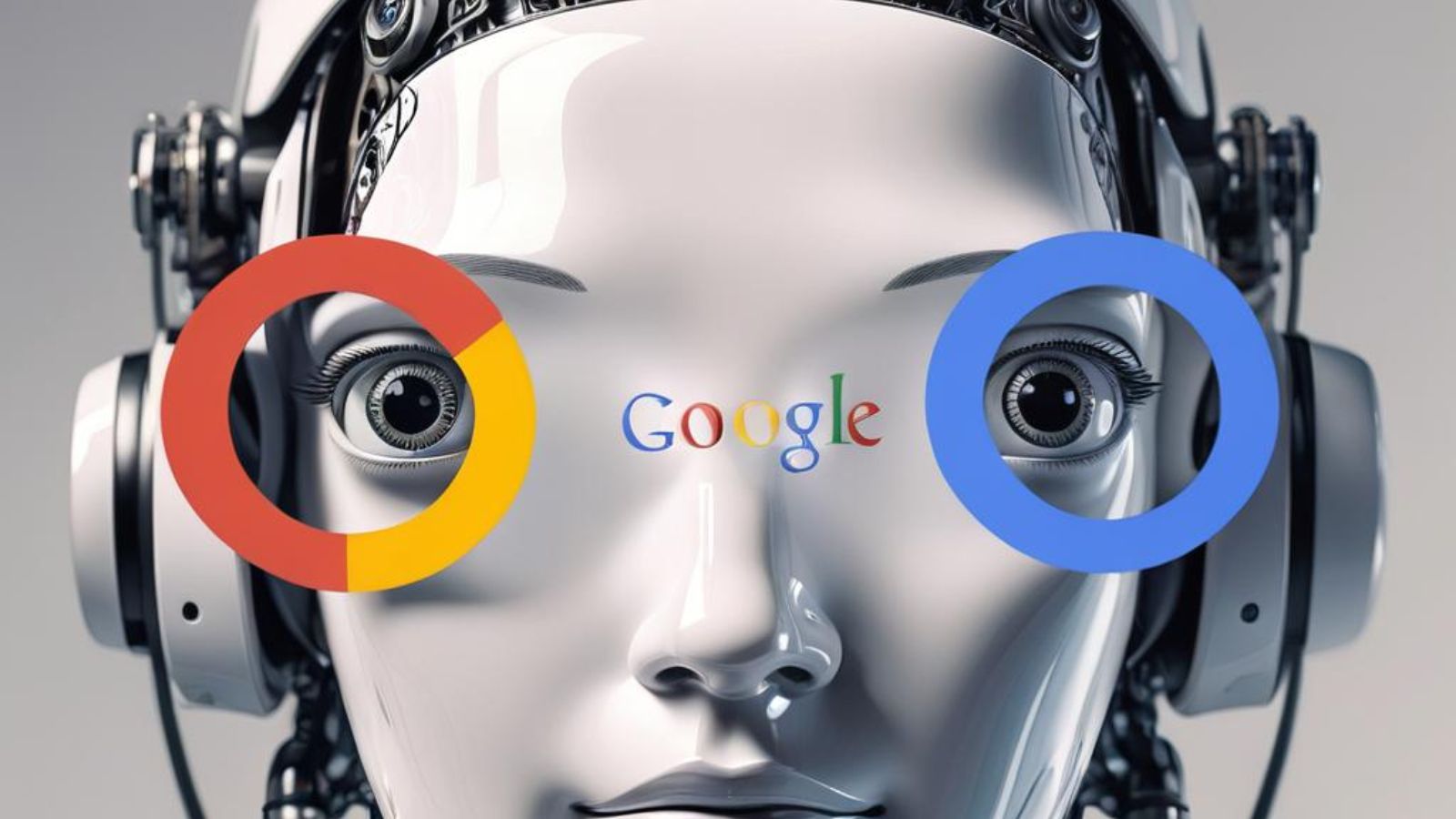Brief Introduction of Google AI:
As with many things related to Google’s AI, “A Guide for Publishers” provides a good starting point for discovering Google’s AI landscape. It breaks down the further depth of how Google AI algorithms significantly influence publishers and how the methods could be used adeptly.
Given the growing importance of Artificial Intelligence in website ranking and overall visibility, this guide seeks to explain how Google’s AI works, and how you, the publisher, can leverage its capabilities to your advantage. In this article, we will discuss the mystery of Google’s AI overviews in detail.
Look into Google’s AI Overviews
The Google AI Overviews are exactly what their name suggests – informative articles that Google’s artificial intelligence professionals write on the topic of artificial intelligence. The goal most aligned with this objective is the ability to make complex AI ideas understandable, specifically for all people with no technology background.
In this capacity, these overviews synthesized difficult ideas and concepts down to their fundamental conceptual parts through the use of plain language and brief descriptions. For this reason, they are useful for enabling a person to have the necessary knowledge of AI concepts without necessarily having to be a technical guru. With such an approach, Google is also aiming to popularize the idea of AI education and extend opportunities for gaining knowledge and skills in this field.
B. Google AI Overview for Publishers. Explain in detail.
The Google AI Overview for Publishers is significant for several reasons:
- Content Optimization: Turning to the examples of the current section, AI helps publishers determine what kind of content the readers are interested in so that they can provide content that will be popular to give the readers a reason to stick around on the publisher’s platform.
- Monetization Opportunities: With Google AI Overview, publishers can relatedly establish high-margin revenue sources like targeted advertising, sponsored content, subscriptions, and so on by analyzing the consumers’ preferences and inclinations.
- Insight Generation: It offers publishers opportunities and a wealth of knowledge toward understanding their target audience in terms of the demographics and behavior and how the content is being received. As a result, publishers can make proper decisions when it comes to producing content and how to earn revenue from their products.
- Competitive Advantage: It confirms that more publishers who fully embrace this technology to analyze data and make the right decisions will be able to penetrate the market deeply and understand customer’s needs and expectations. They can keep up with the trends and surroundings, and improve their tactics regularly to stay updated and attract more readers.
- User Experience Enhancement: With machine learning providing great insights into how the user interacts with their device and interfaces, publishers can make the overall user journey quicker and easier by offering targeted content and improved site layout.
In conclusion, the Google AI Overview for Publishers allows them to control and improve what they publish and how they deliver it to meet users’ needs, as well as take advantage of the prospect of monetization in today’s highly saturated and ever-evolving online world.
II. Understanding Google’s AI Overviews
Discuss Google’s AI Overviews and how they work.
Google’s artificial intelligence overviews are briefs that discuss what pertains to artificial intelligence. They intend to cover principles, concepts, techniques, models, algorithms, and uses of AI in a compressed and comprehensive manner.
These may span almost all fields of study in the field of computer science and artificial intelligence, for instance, machine learning, natural language processing, computer vision, etc.
On how they operate – in all probability, Google must be using people’s input in combination with a software algorithm to collect and create such overviews.
- One is the expertise of the human beings and their participation as they input their best understanding and experience,
- Second, while summarization may be provided by programs, the detailed format and organization of the summaries are likely supported by algorithms.
C. Impact of Google AI on Publishers’ Content
Self-driving car technology of Google AI has influenced the publishers in several ways through interference with the content. Here’s an example overview:
- Personalization: It turns out that almost all Google algorithms are equipped with Artificial intelligence that makes the search results unique for each user based on their previous search history, geographical location, etc.
This insight poses the question that publishers need to customize their content according to the specific slices of the population to achieve better audience attention and coverage.
- Featured Snippets and Knowledge Graph: Google uses its artificial intelligence capabilities to extract information from various web pages to display the snippets and the knowledge graph panels.
There are standard tips that the publishers should follow regarding the layout and organization of their posts and articles in a bid to have high chances of being used as the links, this in turn has a direct positive impact on the visibility and traffic.
- Voice Search: As voice-based search and the major Internet assistant applications become more popular, such as Google Assistant, content providers will have to adjust their content to answer voice queries.
- Content Moderation: The algorithms are becoming common in controlling abusive content, and other materials input by users like comments. Perhaps, publishers should follow the example and adopt AI methods designed to guarantee their visitors’ safety and respect.
- Content Recommendations: In a year or so, Google has social media recommendation systems, including search engine, YouTube, and Google News. It indicates that publishers should provide well-performing and ‘share-worthy’ content on the platform to optimize the chance of being recommended.
For the last, Google AI has impacted the opportunity and the publisher’s position in the modern media environment in terms of content creation, optimization, dissemination, and monetization.
III. Content Optimization for Google’s AI Overviews. Discuss.
This is known as organizing the content that you offer in a manner that is understandable by Google AI and their versions contain snippets, knowledge panels, voice search outcomes, and many more.
Here are the given factors:
- Using Structured Data Markup: It consists of inserting a certain code (markup) in the HTML main structure of the website to facilitate the understanding of the contents of the web page by the search engines.
Rich snippets are valuable from the aspect of Google as they describe your content, for instance, reviews, ratings, events, products, etc., help search and improve its presentation in results.
- Ensuring Mobile-Friendliness: By analyzing its algorithm, it is clear that Google tends to prioritize and value mobile-friendly websites due to the rapidly growing use of mobile devices for web browsing. Responsive web design preserves the functionality of your site when viewed on smartphones and tablets by making the website responsive.
- Creating High-Quality and Relevant Content: The saying “Content is King” has never been truer, especially with the recent advances in AI technology. Certain algorithms used by Google search for relevant, material, and concise and therefore efficient content. This means that one should make more posts that will help them solve their needs or answer questions they have.
- Optimizing for User Intent: Actually, it is very important to discern the semantics of a query to provide relevant results the users need. We are all familiar with the ‘search intent’ model which divides user intentions into four essential categories: informational, professional, commercial, and local.
This may focus on performing keyword research on those topics or developing content that answers your audience’s questions or solves their issues.
- Improving Website Speed and Performance: Perhaps, that is why site speed and overall responsiveness remain crucial elements that affect both users and search engine rankings.
Google’s AI gives a favorable rank to all websites that produce fast speed and integrity of page views. This includes aspects such as the scalability of Images and the use of caching and compression methods for enhancing site performance.
IV. Challenges and Solutions faced by publishers
Google AI poses some challenges to publishers concerning the following aspects of the publishing business. These challenges can include:
- Monetization Issues: Core ad products like AdSense or AdWords allow placing ads automatically and judging their price and places by different factors with the help of artificial intelligence.
Another problem, that may be crucial for publishers, is the difficulty in achieving the highest possible ad revenue and the instability in ad averages.
- Content Discovery: Since AI is also engaged by Google to monitor and censor content, the discovery of relevant material by publishers is a critical factor. It translates to the fact that alterations in algorithmic factors can affect the published content.
- Algorithm Changes: Sometimes they even alter the system for their search and recommendation engines which in turn changes the ranking order of content. This means that the publication industry may slow down in responding to such changes, and consequently face an irregular flow of website visitors.
- Competition from Google Services: Google provides a range of content services, including but not limited to, Google News and Google Discover, with which they directly compete for the people’s time. This could make it hard for publishers to fight off the competition coming from Google as they will be producing content.
To overcome these challenges, publishers can employ several strategies:To overcome these challenges, publishers can employ several strategies:
- SEO and Content Optimization: Here, the authors claim that publishers should regularly monitor any changes made to Google algorithms and then adapt to them. This ensures the use of proper keywords when drafting the content, producing another kind of useful, interesting content, and optimizing the site for visitors to enhance visibility on the search engines.
- Data Analysis and Insights: Information obtained from data analytics tools can be useful for the publishers in identifying the audience behavior and their preferences.
From this point of view, publishers can reach and preview the audience more deeply, hence the possibility of enhancing the sort of content they produce and the way they sell it to the readers.
- Diversification: Publishers should always look for traffic and revenue sources other than Google because it is very risky to rely on one source when the other can easily turn against the publisher. This could include the firm starting to actively engage on social media, and expanding to other advertising networks.
- Collaboration and Partnerships: Readership of the publishers may also opt to partner with other publishers, fellow content producers, and other players in the industry. Working with other websites can make it easier to distribute material and direct traffic to their platform.
- Building Brand Authority: Brand creation and image is a successful way to develop the identity of the publishers and to have the capacity to be remarkable among the wide offers available on the Internet.
Additionally, it can be suggested that the current move made by Google AI can become a threat to certain types of publications, however, by maintaining flexibility in their strategies, producing quality content, and paying attention to the audience, publishers can manage to achieve success in the modern environment.
V. Future Considerations of Google AI
Emerging Technologies in AI Overviews
AI technology describes emerging technologies usually in form of overviews that seek to offer valuable information about new and more advanced developments in AI.
These overviews cover various subjects including new algorithms, novel uses, improved hardware, and a combination of AI with other systems like robotics, IoT, or healthcare. They tell more about the kind of AI that we are likely to see in the future.
VI. To Sum Up
The above-discussed article enables publishers to predict Google’s AI behaviors in handling publisher content and how it is filtered. I further describe the mechanisms by which artificial intelligence determines what content people consume on the internet.
Additionally, it offers specific advice and approaches that can help publishers in marketing their content on the Web. It underlines the necessity of making the algorithms more transparent and explaining how they work to the publishers. In conclusion, the guide makes publishers feel less threatened by Google’s AI and makes them feel like they have control of it.








Leave a Reply